Hunting the Hunter and Looking into our minds
This week, the hunter becomes the hunted in a new discovery with beetle larvae and we find out how computer simulation can be used to image what someone is seeing. Plus, how T cells can be taught to tolerate friendly bacteria, using water to produce limitless supplies of hydrogen, neutrinos travelling faster than the speed of light and the benefits of promiscuity!
In this episode
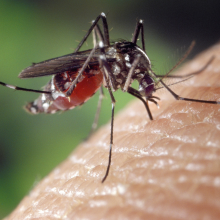
00:24 - DEET Scrambles Sense of Smell
DEET Scrambles Sense of Smell
DEET is one of the most common chemicals in insect repellents, but since its invention scientists have been unable to settle a decision about exactly how it works. Now, work published in Nature suggests that DEET not only confuses scientists, but confuses insects too by scrambling the code they use to identify odours.
DEET, or N,N-diethyl-meta-toluamide, was developed by the US army after the 2nd world war. It's very effective at preventing mosquitoes and other insects from biting, but research has never shown conclusively how it works; though we expect it is by either blocking the olfactory system from recognising a meal, or triggering an avoidance behaviour response.
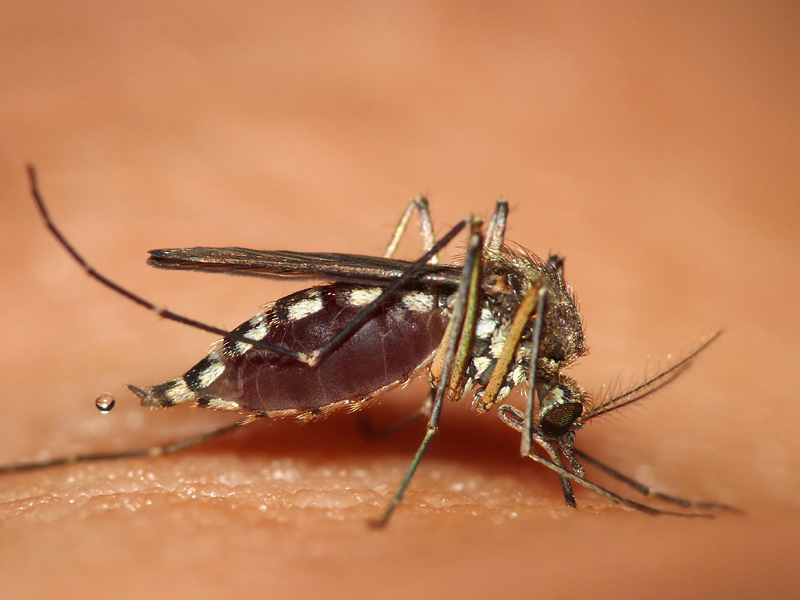 Insects like mosquitoes, and the intensely studied fruit fly Drosophila melanogaster, detect odours in the air through their antennae. Each of the many receptors present consists of a protein called ORCO bound to any one of around 60 other proteins. Odours are detected when they interact with these two proteins, locking together to form a complex and triggering activity in local nerves. This activity can be either the excitement or inhibition of a nerve response, and it's the particular pattern of activity that encodes a smell.
Insects like mosquitoes, and the intensely studied fruit fly Drosophila melanogaster, detect odours in the air through their antennae. Each of the many receptors present consists of a protein called ORCO bound to any one of around 60 other proteins. Odours are detected when they interact with these two proteins, locking together to form a complex and triggering activity in local nerves. This activity can be either the excitement or inhibition of a nerve response, and it's the particular pattern of activity that encodes a smell.
Leslie Vosshall and colleagues at the Howard Hughes Medical Institute looked at the activity in certain fruit fly nerves and observed what happens in response to DEET alone, and in combination with a range of other odour molecules.
They found that the effect of DEET was not straightforward, but depends on the odour, receptor and concentration. In some combinations, DEET suppressed a normally inhibitory response, increasing neural activity, while in others it reduced an excitatory reaction, reducing neural activity. DEET alone actually elicited very little response.
The authors conclude that DEET acts as a molecular confusant, scrambling the normal odour code by changing the way the olfactory receptors react to a given chemical. The insects are still capable of detecting odours, but can no longer work out what they are.
Understanding more about how DEET works could lead to the development of new repellents, and ultimately help to reduce transmission of insect borne diseases such as Malaria and Dengue fever.
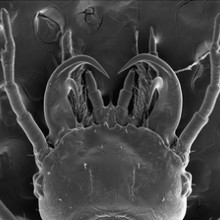
03:07 - Predator-Prey role reversal: hunter becomes hunted
Predator-Prey role reversal: hunter becomes hunted
A beetle larva that waves its antennae to attract amphibians 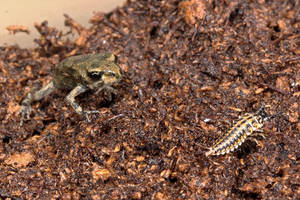 before grabbing them, drinking their body juices and reducing them to a dessicated husk has been discovered by scientists in Israel.
before grabbing them, drinking their body juices and reducing them to a dessicated husk has been discovered by scientists in Israel.
Small beetles and larvae make an ideal toad and frog-sized meal, and these amphibians are well-adapted to stealthily creeping up on them and using a lightning-fast flick of the tongue to turn them into lunch.
But in a rare example of role-reversal, predator has become prey. Writing in PLoS One, Tel-Aviv University researchers Gil Wizen and Avital Gasith have discovered that two species of Epomis ground beetle larvae found in the Middle East, E. circumscriptus and E. dejeani, exploit the very same movements that attract frogs and toads in the first place - by waving their antennae around - only to dodge the predators' attempts to eat them and then grab on to the amphibian themselves. The larvae are equipped with razor-sharp mouthparts, which they use to pierce the amphibian's skin and then drink the body fluids. In some cases they even consume the unfortunate victim's flesh.
The researchers began to study the Epomis beetles in 2007 after finding specimens of the larvae attached to amphibians in the wild. But how this status quo was reached - with what should be the hunter being consumed by the hunted - was not known.
To find out, in hundreds of experiments the research duo placed 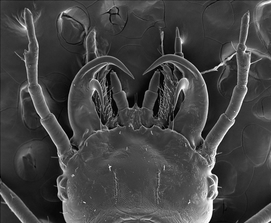 one or more of the larvae into a tank together with a suitable amphibian study subject and videoed the results. The footage shows the larvae increasing the intensity of their antenna-waving activities as the potential victim approaches. When the amphibian makes a grab, the larva dodges the lunge before parrying with an attack of its own, in some cases grabbing the mouthparts and on other occasions latching on behind the head. With an hour or so the amphibian is dead.
one or more of the larvae into a tank together with a suitable amphibian study subject and videoed the results. The footage shows the larvae increasing the intensity of their antenna-waving activities as the potential victim approaches. When the amphibian makes a grab, the larva dodges the lunge before parrying with an attack of its own, in some cases grabbing the mouthparts and on other occasions latching on behind the head. With an hour or so the amphibian is dead.
The success rate of the strategy is staggering. Out of about 400 face-offs, the amphibians got the larvae into their mouths only 7 times. But even then only transiently: they quickly spat them out, at which point the larvae promptly turned around and made a succesful attack of their own. In one even more surprising experiment, a toad did swallow one of the larvae, which continued to writhe around in the animal's stomach for a further two hours before it was regurgitated. At this point, apparently unharmed, the larva then make a meal of the toad that had previously consumed it.
This kind of role-reversal is extremely rare. In only about 10 percent of predator-prey relationships in the animal kingdom does a smaller animal eat a bigger one, but these are all active attacks rather than a small creature luring its prey. Wizen and Gasith thing that it could have evolved as a means of anti-predator defence, which has subsequently become the creature's exclusive lifestyle. The amphibians may not have evolved to combat the threat since, compared with the majority of the their food, for which their hunting strategy is highly successful, these beetle larvae are relatively rare...

11:37 - Teaching T Cells to Tolerate Friends
Teaching T Cells to Tolerate Friends
Teaching the immune system to tolerate certain friendly bacteria is an important step towards gut health, and this week researchers in America have shed some light on how and where those lessons take place.
There is a well-known and understood way of training the immune system, which occurs in an organ called the thymus. Special immune cells, known as T cells, are generated with a wide range of antigen receptor molecules on their surface that are used to recognise and attach to other molecules. Some of these would interact with our own cells, leading to auto-immune diseases but in the thymus these receptors are checked and sorted, with the non self-reactive T cells maturing into T effector cells, to play a role in identifying and attacking infection. The self-reactive T cells are either destroyed or matured into regulatory cells or Treg cells, which keep other components of the immune system in check.
Working with mice, Chyi-Song Hsieh and colleagues at Washington University School of Medicine, showed that an encounter between immature T cells and commensal, or friendly, gut bacteria could also lead to the creation of Treg cells and, therefore, teach the immune system to hold fire. This education happens directly at the site of the encounter - the gut.
 The researchers noticed that Treg cells around the colon used different antigen receptors from those in other locations, and that these seemed to correlate with the gut bacteria themselves, interpreting the bacteria in a similar way to how Treg cells elsewhere interpret 'self'.
The researchers noticed that Treg cells around the colon used different antigen receptors from those in other locations, and that these seemed to correlate with the gut bacteria themselves, interpreting the bacteria in a similar way to how Treg cells elsewhere interpret 'self'.
They then wanted to find out if these receptors were actually learned from the bacteria, and not just from the mouse itself. To do so, they transferred the genes that code for these receptors into the bone marrow of modified mice that do not normally produce T cells. This then caused them to produce immature T cells expressing the right receptors, but these cells didn't mature into Treg as expected. They realised that as the modified mice had been delivered from elsewhere, they would have developed different gut bacteria, so only when they housed all the mice together, allowing them to share bacteria, did these Treg cells mature. This showed that the presence of the bacteria themselves is essential for this immune training process to work.
Hsieh also noticed that in mice with colitis, an inflammatory condition of the bowel, these receptors were not present on Treg cells, but rather on effector T cells, which encourage an adverse reaction to the bacteria. It's suggested that breakdown in this immune education process might similarly lead to ulcerative colitis and Crohn's disease in humans.
Although the exact mechanism for how the bacteria train the T cells is still unknown, this paper, published in Nature, marks an important step forward and the first in-vivo demonstration of T cell education outside the thymus, as well as suggesting new ways to approach the treatment of these diseases.
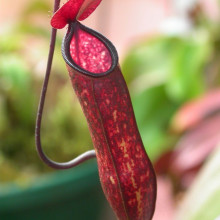
14:47 - Pitcher plant-inspired liquid repellent
Pitcher plant-inspired liquid repellent
Inspired by the insect-eating pitcher plant, scientists have created a 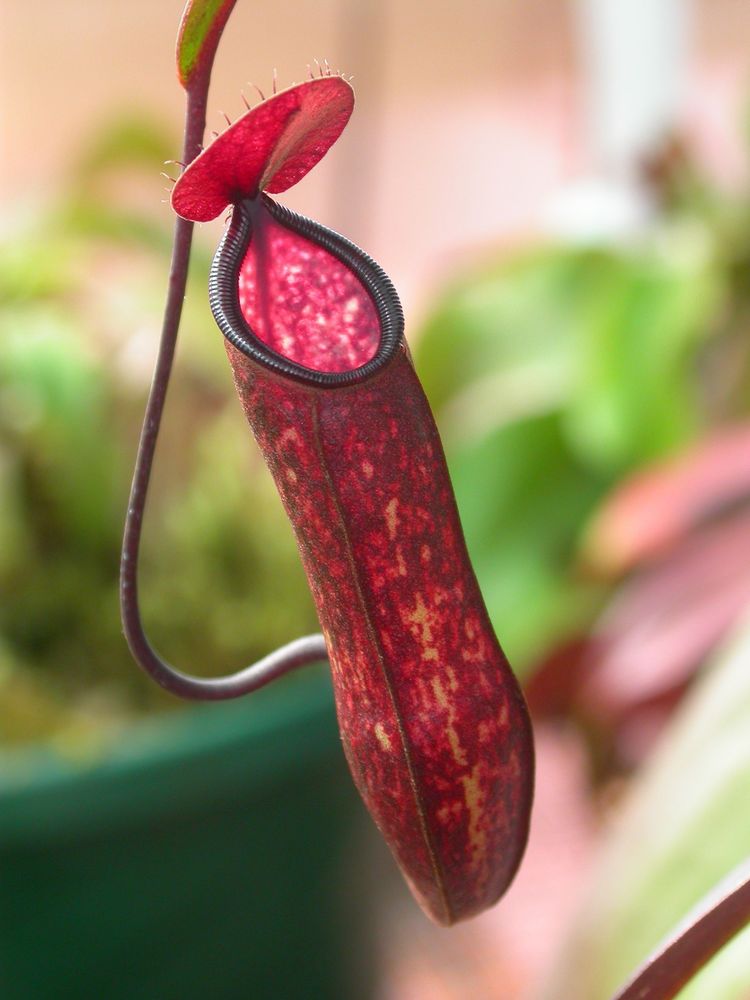 material capable of repelling almost any liquid, including blood and even crude oil.
material capable of repelling almost any liquid, including blood and even crude oil.
Dubbed "slippery liquid infused porous surfaces", or SLIPS for short, the new materials are inspired by a natural phenomenon. Carnivorous pitcher plants catch flies and other insects by crafting a specialised surface that traps a layer of water against itself. This repels the oil on the feet of visiting insects, causing them to slide helplessly into the plant's pitcher of digestive juices.
Harvard scientist Joanna Aizenberg and her colleagues have copied this design, creating a microporous surface made of Teflon to which a fluorine-rich organic inert liquid called Fluorinert FC-70 is added. The liquid spreads out across the surface, coating the Teflon, by capillary action and locks into place within the pores. But as it doesn't mix with oil or water-based substances, any liquids - and even ice - that land on the surface form droplets and slide off. And because liquids are incompressible, the new SLIPS-endowed surfaces remain functional even under very high pressures. The team successfully tested them to 767 atmospheres, which was the highest pressure they could generate in their laboratory.
Critically, previous attempts to build liquid-repelling, high-slip surfaces have been modelled on a different plant: the lotus leaf. This uses a system of tiny pillars to trap a layer of air against the leaf surface, causing it to shed water and dirt.  But the system is easily compromised by physical damage and liquids with low surface tension simply displace the air rendering the surface useless.
But the system is easily compromised by physical damage and liquids with low surface tension simply displace the air rendering the surface useless.
The pitcher-inspired SLIPS, on the other hand, being based on a trapped liquid rahter than air, do not suffer this drawback and are also far more resilient. In fact, when the surface is damaged it effectively "self-heals" when the liquid flows back into the abraded area.
Consequently, Aizenberg and her colleagues, who have described the work this week in the journal Nature, are optimistic that the surfaces will remain super-slippery and liquid repellent even under extreme conditions. Possible applications include uses in deep-sea drilling rigs, safer fuel transportation, anti-icing coatings and even anti-graffiti measures...
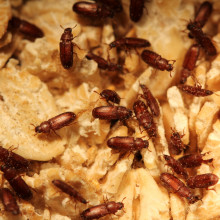
19:59 - Speedy Neutrinos, Hydrogen Cells and Promiscuous Females.
Speedy Neutrinos, Hydrogen Cells and Promiscuous Females.
James Gillies, CERN; Michael Zasloff, Georgetown University; Bruce Logan, Pennsylvania State University; Matthew Gage, University of East Anglia
Neutrinos faster than Light
Meera - Scientists might have found particles travelling
faster than the speed of light. The OPERA experiment sent a beam of subatomic neutrino particles from the CERN facility in Geneva to the Grand Sasso Laboratory 732 kilometres away. The neutrinos appear to have travelled 0.0025% faster than the speed of light, a finding which, if confirmed, could revolutionise modern physics, CERNS James Gillies comments on the discovery...
James - Everybody in physics is going to be looking for an independent measurement before they decide whether this is true or whether it's not. A lot of people seem to think that science is about proving things. It's actually the opposite - science is about knocking things out. It's about disproving stuff. It happens all the time. What's different this time is that the stakes are that much higher because the speed of light being a cosmic speed limit is one of the fundamental tenets of physics. So if this turns out to be right, then there's some serious head scratching to be done.
---
Shark Antiviral
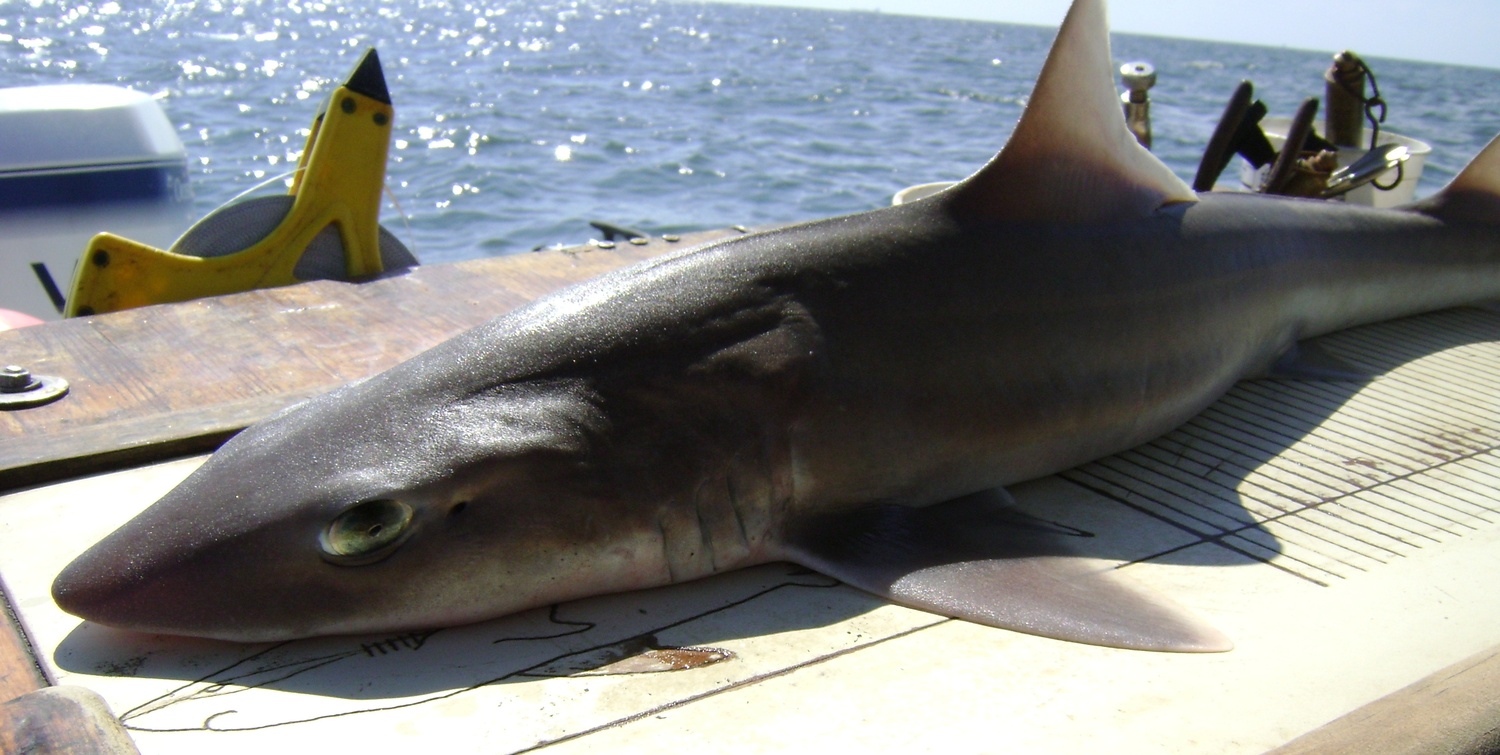 Meera - A compound found in the liver of dogfish sharks could treat a range of human viruses.
Meera - A compound found in the liver of dogfish sharks could treat a range of human viruses.
The compound squalamine was found to be effective against diseases such as dengue, yellow fever and Hepatitus B and D in animal models by altering the environment needed for the viruses to survive inside a cell... as Michael Zasloff from Georgetown University explains...
Michael - What squalamine has taught us is that by changing the characteristics of a cell or a tissue, it can render that cell or that tissue resistant to a virus. So it's not targeting the virus, but basically changing the design, the internal architecture of the cell to make that cell or tissue inhospitable for viral replication or viral growth.
---
Limitless Hydrogen Cell
Meera - Water could be used to provide
limitless supplies of hydrogen. Microbial fuel cells harness the breakdown or organic matter by bacteria to produce Hydrogen, but electricity is needed to power the process. Until now this has been provided by fossil fuels but now Bruce Logan from Penn State University has developed a way using water.
Bruce - What we figured out was that we could use the salinity difference between freshwater and saltwater. This is a process called 'reverse electrodialysis' where if you have freshwater and saltwater next to each other, that can create energy. It's like running uphill takes energy, running downhill doesn't take energy. And now, you have a system where the electrical power isn't needed because the energy is being extracted from this salinity difference.
---
Promiscuity in inbred females
 Meera - And finally, female
Meera - And finally, female
promiscuity could be beneficial to a population. Working with flour beetles, Matthew Gage from the University of East Anglia found that females in small populations, where there's a higher risk of inbreeding, behave promiscuously to increase their chances of reproductive success...
Matthew - Females were able to have their eggs fertilised by males that carry genes that had greater complementarity, and what that translated into was females gaining genetic benefits by mating with more males because they're able to somehow choose the right males or the right sperm to give great genetic benefits to their offspring, and so have higher offspring viability and leave more offspring in the next generation.
Meera - The team aim to explore further benefits of promiscuity in larger populations to explain why the behaviour is so widespread across the animal kingdom.










Comments
Add a comment